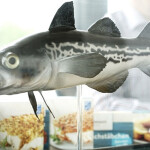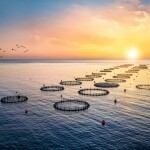Officials in the United States have reported the country’s first-ever case of Early Mortality Syndrome (EMS), raising concerns from shrimp industry leaders about what the government will do to contain it.
The disease targets farmed Penaeid shrimp, usually affecting shrimp postlarvae within a month of stocking. According to the National Center for Biotechnology Information at the National Institutes of Health the disease, technically called acute hepatopancreatic necrosis disease, has a nearly 100 percent mortality rate.
EMS was first found in southern China seven years ago, and it had spread to other parts of Asia in the following years. In 2013, the disease ravaged the Mexican shrimp industry, causing production to drop by about 50 percent.
That same year, the Southern Shrimp Alliance sent a letter to officials with the Department of Agriculture, the Department of Commerce and the Food and Drug Administration expressing concerns about the impact EMS could have on the domestic industry.
Officials detected EMS in Cameron County, Texas in late July, according to Donna Karlsons, a public affairs specialist for the USDA’s Animal and Plant Health Inspection Service. The state’s southernmost county, whose county seat is Brownsville, sits on the Mexican border.
In a statement to its members on Wednesday, the alliance said it remained ‘unclear what steps, if any,” federal officials were taking to keep EMS from spreading.
In a statement to SeafoodSource on Friday, Karlsons said the USDA’s only authority was to report the case to the World Organization for Animal Health. It did that on 23 August. However, she noted that the agency is working with the University of Arizona’s Aquaculture Pathology Laboratory to collect mud samples for testing. In addition, APHIS has reached out to shrimp producers to discuss the impact on trade.
No shrimp remain on the detected site, she said, noting Texas Parks and Wildlife officials quarantined the facility on 18 August.
“The affected site has not discharged any water,” she said. “Affected ponds were drained of water (to a retention pond on site) and pond bottoms allowed to dry and crack. Texas Parks and Wildlife is developing a strategy for disinfection of remaining water on the site.”
According to the Global Aquaculture Alliance, the disease is caused by bacteria and transmitted orally through a shrimp colony. It creates a toxin that destroys the hepatopancreas, a shrimp’s digestive gland.
Earlier this year, six major shrimp importing countries announced earlier this year they would only buy products with disease-free certification. However, according to the GAA, EMS does not affect humans.






